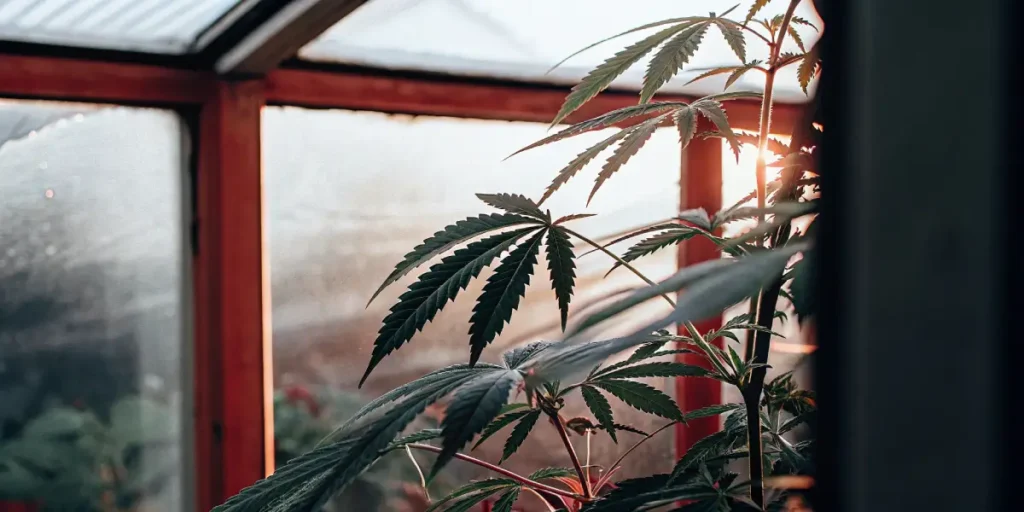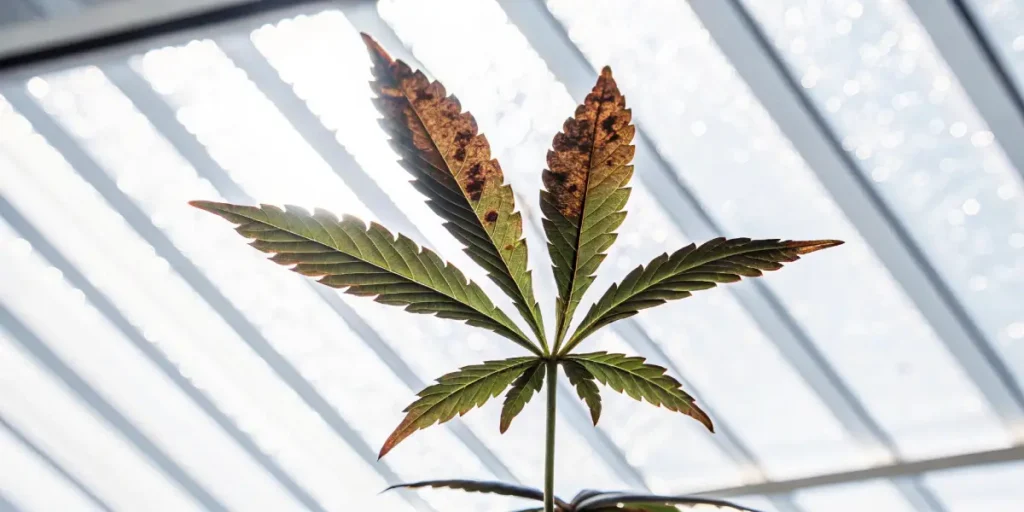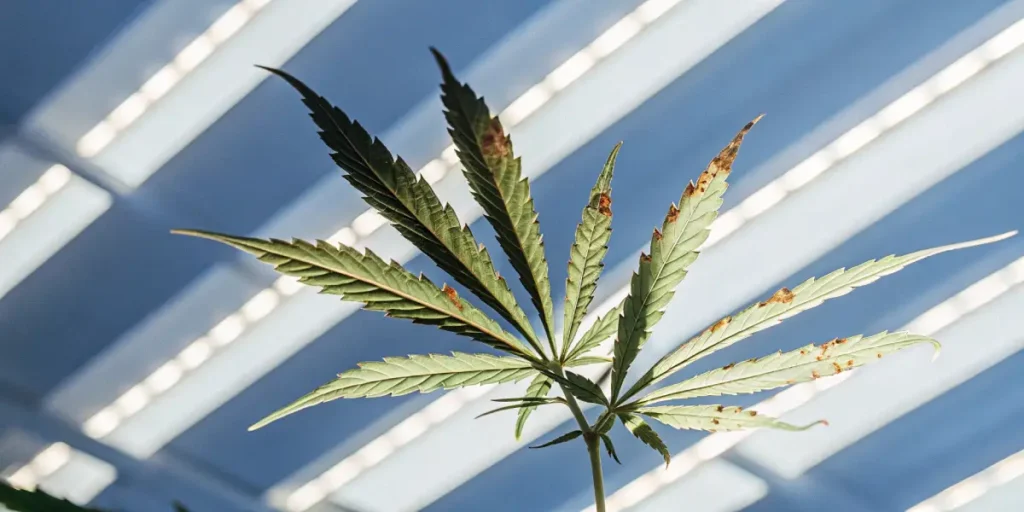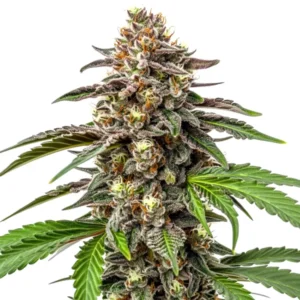
Calcium Immobile in Plants Cannabis
Calcium immobile in plants cannabis can be a tricky issue for both new and seasoned growers. When your cannabis plants aren’t getting enough calcium, they can show signs of distress. This nutrient doesn’t move easily within the plant, making it crucial to ensure proper uptake from the start.
Calcium plays a vital role in strengthening the cell walls of cannabis plants. If you notice abnormal growth, it might be due to calcium immobility. Knowing how this nutrient behaves can help you maintain healthy plants and avoid common pitfalls.
Recommended Strains
Let’s dive into why calcium is immobile and how you can manage it. By doing so, you can help your cannabis plants thrive. Whether you’re growing your first plant or managing a larger operation, calcium immobility is a crucial aspect of successful cultivation.
Calcium Deficiency Symptoms in Cannabis Plants
Calcium deficiency symptoms in cannabis plants can appear in several ways. Look for distorted new growth, which often appears twisted or curled. You might also notice brown spots on leaves, particularly on the edges, which can hinder photosynthesis.
If left unchecked, calcium deficiencies can stunt plant growth, leading to smaller yields. The roots might also become weak, making them more susceptible to diseases. Therefore, recognizing these symptoms early can save your plants from long-term damage.
Besides to visible signs, calcium deficiency symptoms in cannabis plants may include slower overall growth and reduced vigor. The plant’s structural integrity can be compromised, making it difficult to support heavy buds during flowering. By addressing these symptoms promptly, growers can prevent more severe complications and ensure healthy development.
Another aspect to consider is the role of environmental factors in exacerbating calcium deficiencies. High humidity levels or inconsistent watering practices can interfere with calcium uptake. Monitoring environmental conditions and implementing proper care routines can mitigate these risks, fostering a more stable growing environment.
Promos & Deals
Immobile Nutrients in Cannabis Cultivation
Calcium is one of several immobile nutrients in cannabis cultivation. Unlike mobile nutrients, immobile ones cannot move from older leaves to new growth. This means that deficiencies often show up in new growth first.
Other immobile nutrients include sulfur and iron. Each plays a unique role in plant health, but all share the common trait of immobility. Knowing how these nutrients work can prevent deficiencies and promote robust plant health.
Immobile nutrients in cannabis cultivation require strategic management to prevent deficiencies, especially during critical growth stages. Understanding calcium immobile in plants cannabis is essential, as calcium cannot move once deposited in plant tissues, making it crucial to maintain adequate levels in the nutrient solution. Growers should ensure that nutrient solutions contain sufficient amounts of these immobile elements to support healthy development. Regular monitoring and adjustments to the nutrient regimen can help maintain the balance necessary for optimal plant health.
It’s also important to note that the presence of other nutrients can influence the uptake of immobile nutrients. For instance, excess levels of potassium or magnesium can interfere with calcium absorption. By maintaining a balanced nutrient profile, growers can minimize competition and enhance the availability of essential immobile nutrients like calcium.

How to Fix Calcium Immobility in Cannabis
To fix calcium immobility in cannabis, start by checking your soil’s pH levels. Ideal pH for cannabis is between 6.0 and 7.0 for soil and 5.5 to 6.5 for hydroponics. This range ensures calcium availability.
Consider using a calcium-rich nutrient solution if your plants show deficiency symptoms. Products designed for cannabis cultivation can provide the right balance of nutrients, including calcium.
Regularly monitoring your growing conditions can prevent problems before they start. This proactive approach will keep your plants healthy and productive. Adjust your nutrient schedule as needed to accommodate your plants’ growth stages.
Another effective method on how to fix calcium immobility in cannabis is to incorporate foliar feeding. Applying calcium directly to the leaves can provide a quick nutrient boost, aiding in faster recovery. However, this should be done with caution, as excessive application can lead to nutrient burn.
Calcium Immobile Nutrient Cannabis Solutions
Calcium immobile in plants cannabis presents unique challenges that require both preventive and corrective solutions. Start with high-quality soil or growing medium that contains adequate calcium levels to ensure proper nutrient uptake and healthy plant development.
For hydroponic setups, use a nutrient solution containing calcium nitrate. This ensures your plants receive the calcium they need. Regularly check your setup to identify any issues early.
For soil-grown cannabis, consider adding gypsum or dolomite lime. These amendments can improve calcium availability in the soil. They also help maintain the proper pH balance, which is essential for nutrient uptake.
Implementing calcium immobile nutrient cannabis solutions also involves regular soil testing. By analyzing soil composition, growers can determine the precise nutrient needs of their plants. This allows for targeted amendments, ensuring that the calcium levels are optimal for cannabis growth.
Another strategy is to rotate crops or use cover crops that enhance soil health. These practices can naturally improve nutrient availability and reduce the risk of calcium immobility. Healthy soil supports robust plant growth, making it easier to manage calcium levels and other immobile nutrients.
Diagnosing Calcium Immobility in Cannabis Plants
Diagnosing calcium immobility in cannabis plants requires careful observation. Start by examining the newest growth for any signs of deficiency. Pay attention to leaf tips and edges, as these areas often show symptoms first.
Use a soil test to check the nutrient levels if you suspect a deficiency. This test can help determine if the issue is due to calcium or another nutrient. Accurate diagnosis is key to applying the right solution.
Consistent monitoring can help you catch issues before they affect your entire crop. Regularly inspect your plants and adjust your care routine as needed. This approach will help you maintain healthy and productive cannabis plants.
To enhance diagnosing calcium immobility in cannabis plants, consider employing technology such as digital sensors. These tools can provide real-time data on soil moisture and nutrient levels, allowing for precise adjustments. Leveraging technology can streamline the diagnostic process and improve the accuracy of your assessments.
It’s also beneficial to keep a detailed log of your cultivation practices. Record observations, nutrient applications—including awareness of calcium immobile in plants cannabis—and environmental conditions to track patterns over time. This documentation can be invaluable when diagnosing issues and implementing solutions, ensuring your cannabis plants receive the best possible care.
Recommended Cannabis Strains from Blimburn Seeds
- Gelato: Known for its balanced effects and rich flavor profile, Gelato benefits from careful nutrient management, including calcium.
- Bubba Kush: This strain thrives with proper calcium levels, helping ensure its dense buds and robust growth.
- Gorilla Glue #4: A popular choice among growers, Gorilla Glue #4 requires attention to calcium levels for optimal resin production.

FAQs on Calcium Immobile in Cannabis Plants
What causes calcium immobility in cannabis plants?
Calcium immobility in cannabis plants occurs because calcium is an immobile nutrient. Once it is used by a part of the plant, it cannot be moved to another part where it might be needed more. This characteristic requires growers to ensure a consistent supply of calcium, especially during peak growth periods.
Environmental factors such as incorrect pH levels or poor soil structure can exacerbate calcium immobility. These conditions can prevent roots from absorbing calcium effectively, leading to deficiencies that impact plant health.
Knowing the root cause of calcium immobility in plants cannabis is crucial for addressing the issue effectively. Factors such as compacted soil or inadequate aeration can hinder root function, further limiting calcium uptake. Ensuring proper soil structure and drainage can alleviate these problems and promote healthier root systems.
Additionally, interactions with other nutrients can contribute to calcium immobility in cannabis plants. An overabundance of certain nutrients, such as magnesium or potassium, can compete with calcium for uptake. Balancing nutrient levels and avoiding over-fertilization are essential steps in maintaining optimal calcium availability.
How can I identify calcium deficiency symptoms in cannabis plants?
To identify calcium deficiency symptoms in cannabis plants, observe the new growth. Look for signs such as twisted leaves or brown spots on the leaf edges. These symptoms indicate that the plant is not receiving enough calcium.
Besides to visual symptoms, reduced growth rates and weaker root systems can also signal a calcium deficiency. Regular plant inspections can help you catch these issues early and adjust your care routine accordingly.
Another indicator of calcium deficiency symptoms in cannabis plants is the presence of necrotic leaf tips. This condition occurs when cell death begins at the leaf margins, progressing inward. Early detection and intervention are crucial to prevent further deterioration and to support plant recovery.
It’s important to differentiate calcium deficiency symptoms from other nutrient issues, as they can present similarly. Conducting a comprehensive nutrient analysis can help pinpoint the exact deficiency, allowing for targeted corrective measures. Accurate diagnosis is key to restoring plant health and maximizing yields.
Which cannabis strains require more calcium?
Some cannabis strains, like Gorilla Glue #4 and Bubba Kush, may have higher calcium requirements due to their growth patterns and yield potential. These strains often produce dense buds and require robust nutrient support to thrive.
When selecting strains like Gelato from Blimburn Seeds, consider their nutrient needs and adjust your growing practices to ensure they receive adequate calcium. This attention to detail will help maximize your yield and plant health.
Additionally, strains with rapid growth rates or those that produce large flowers may demand more calcium. Providing adequate calcium immobile nutrient cannabis solutions for these strains can support their vigorous development and enhance overall plant robustness. Tailoring your nutrient regimen to meet the specific needs of each strain can lead to better results.
Researching the genetic background and growth characteristics of your chosen strains can offer insights into their calcium requirements. Consulting with other growers or industry experts can also provide valuable information on optimizing nutrient management for different cannabis strains. Collaborating with the community can enhance your cultivation success.
What are effective ways to fix calcium immobility?
Effective ways to fix calcium immobility include using a calcium-rich nutrient solution and adjusting the pH level of the growing medium. These steps ensure that calcium is available for plant uptake.
Adding soil amendments like gypsum or dolomite lime can improve calcium availability in soil-grown plants. For hydroponic systems, ensure that your nutrient solution contains sufficient calcium. Regular monitoring and adjustments can prevent long-term issues.
Incorporating organic matter into your soil can also be an effective way to fix calcium immobility. Organic materials improve soil structure and nutrient retention, enhancing the availability of calcium and other immobile nutrients in cannabis cultivation. This approach supports sustainable growing practices and long-term soil health.
Utilizing chelated calcium products can provide an immediate solution to calcium immobility issues. These products are designed for enhanced absorption, ensuring that calcium is readily available to the plant. Including chelated calcium in your nutrient program can help address deficiencies quickly and effectively.
Are there any preventive measures for calcium immobility?
Preventive measures for calcium immobility focus on maintaining optimal growing conditions. Regularly check and adjust the pH levels of your soil or hydroponic solution to ensure they remain within the ideal range for calcium uptake.
Consider using a balanced nutrient solution that includes calcium as part of its formulation. This ensures your plants receive the necessary nutrients throughout their growth cycle, reducing the risk of deficiencies and promoting healthy development.
Implementing crop rotation and cover cropping strategies can serve as preventive measures against calcium immobility. These practices enrich the soil, improving its structure and nutrient content over time. Healthy, well-aerated soil supports efficient nutrient uptake, mitigating the risk of calcium deficiencies.
Regularly aerating your soil or growing medium can also prevent calcium immobility. Compacted soil inhibits root growth and nutrient absorption, leading to potential deficiencies. By ensuring proper soil aeration, you create an optimal environment for root development and nutrient uptake, supporting robust cannabis growth.



















